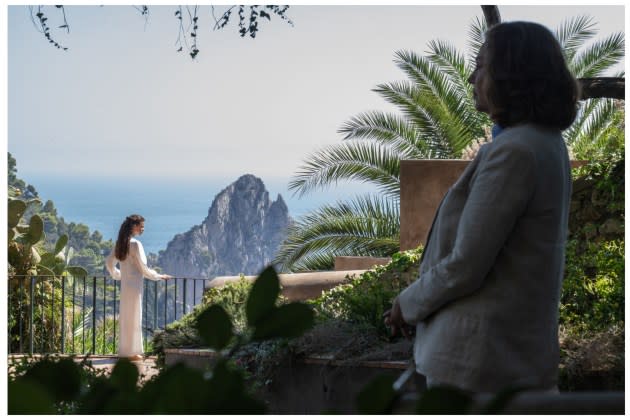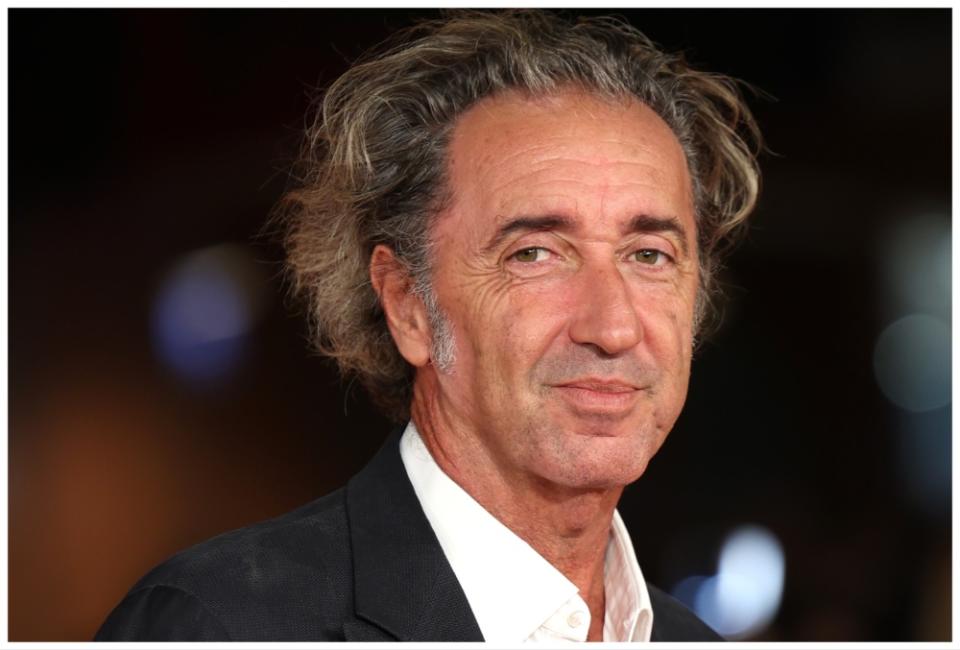Paolo Sorrentino on Making His First ‘Feminine Epic’ With Cannes Film ‘Parthenope’ and Directing Gary Oldman: He’s ‘One of the Top Five Actors in the World’ (EXCLUSIVE)
- Oops!Something went wrong.Please try again later.

Paolo Sorrentino is back in Cannes for the seventh time with “Parthenope,” a love letter to his native Naples but also, as he puts it, a film about his “missed youth” that comes as a natural follow-up to his autobiographical “The Hand of God.” Perhaps more significantly, “Parthenope” – an epic spanning several decades – is Sorrentino’s first female-centric film. Why? “In thinking of a modern hero, it came naturally to me that it would be a heroine, not a man,” he tells Variety.
Let’s start with the film’s titular protagonist, Parthenope. Of course, Neapolitans in Italy are also known as “Parthenopeans.” My impression is that, after returning from Rome to Naples to make “The Hand of God,’ your native city drew you further back into its fold.
More from Variety
It’s a bit more complex, actually, not necessarily just linked to Naples. “Parthenope” was born from a series of long-simmering thoughts and emotional changes. But it’s true that it begins with “The Hand of God,” the film with which I became a grown up. Like all directors, I always do the math of how many films I have in me. And in thinking about what films I had left to make, starting from “The Hand of God,” I began to choose those that pointed toward the essence of what interests me. That is the process. I started with “The Hand of God” where I was interested in describing my youth, and it continued – or developed in parallel – with this other thing that interested me which is talking about my missed youth.
Tell more more about your missed youth.
The abandonment, the carefreeness of the kids in the film is something that eluded me. That I only dreamed of. So I wanted to talk about a dreamed youth, rather than a youth that I experienced, as I instead did with “Hand.” But it’s true that Naples is a kind of magnet, because I have this relationship of closeness and escape with Naples. Like many other Neapolitans, I’ve been there; I’ve left; and then I tried to return. And by reading the great writers, you realize that closeness and escape are the two great constants of an individual’s love life. And therefore of my love affair with Naples.
Parthenope, the protagonist, is your alter ego of sorts in this feminine epic. It’s the first time that you center a film so clearly around a woman.
I wanted to make an epic movie, the epic of a modern hero. And in thinking of a modern hero it came naturally to me that she was a heroine, not a man, for many reasons. Because I find the journey that women make much more heroic today than the epic and heroic journey of man was in the past. That is, the great journey toward freedom that women have set in motion today but which comes from way back. It’s an epic journey. It’s a journey full of obstacles, full of prejudices. And it’s a very courageous journey that women are making. Because it’s not just about affirming the right to freedom. It’s about identifying the consequences of insisting on one’s freedom at all costs and these consequences can very often be loneliness. The great celebration of freedom that women are advocating is a celebration to which one suspects that men are not invited because one suspects that men are unable to cultivate this sense of freedom like women. And so for this interconnected series of reasons, it seemed to me that an epic journey told today must necessarily be a woman’s journey.
I want to add that I am telling the story of a woman not because I know her, but for exactly the opposite reason. As Philip Roth said, the reason why someone starts writing about a character is precisely because you are clueless about that character. The obsession comes from being ill-equipped, not from knowledge.
To play Parthenope, you chose an amazing newcomer Celeste Dalla Porta who, ironically, is not Neapolitan. How did you pick her?
Obviously, I searched widely in the Neapolitan basin. But since the narrative led me to a character who was part of a Neapolitan upper class who has a cosmopolitan vocation and tends to be removed from Neapolitan clichés, I thought she just had to be Italian as long as she got the accent right, which she did. The decisive reason is that Celeste, more than other actresses, had considerable credibility in playing both an 18-year-old and a 35-year-old woman, which was the required age range. While, for reasons I can’t fathom – because it’s always difficult to understand the inner workings of actors – the others weren’t totally believable to me as they grew older.
It’s pretty obvious that you are a big fan of John Cheever, who is played by Gary Oldman in your film. Did you draw from Cheever’s diaries for his character?
Yes, I drew mainly from his diaries. Though his lines in the movie are mostly mine. I had the presumption of putting my words in his mouth.
What type of indications did you give Gary Oldman to play Cheever?
I think he knew Cheever’s work quite well. Actually, he’s the one who told me how he would play Cheever. He said, “There is a very good John Cheever interview on YouTube. I saw it, I understood it, and I know how to do him.” And that was the end of that character’s preparation. Oldman is one of the top five actors in the world. He can play anything.
The great Stefania Sandrelli plays an important role. Was this also a way to pay homage to Italian cinema’s glorious past?
If I have to be honest, I’m not a great cinephile, even though I have made films [“The Great Beauty”] that have been associated to other very famous films [“La Dolce Vita’]. But in truth, I don’t have this sort of mythology of cinema. This type of gushing idolatry for cinema. So I’m sorry to disappoint you, but there wasn’t an idea to pay homage to the glory days of Italian cinema [as a whole] through Stefania Sandrelli. Having said that, there was instead the idea to hark back to some important films that Sandrelli made, in particular Antonio Pietrangeli’s “I Knew Her Well” (1965). When we see her now that she is older, Sandrelli still retains that inscrutable pain that one has as an adolescent and that she had I that film, and that she probably also had as a person and still has now.
Talk to me about teaming up again with cinematographer Daria D’Antonio, with whom you also worked on “Hand of God.” The visuals are very sensual but never overdone.
Daria has this wonderful characteristic, compared to many other DPs, of knowing very well the sense of proportion that was fundamental for this film. Since she is Neapolitan like me, it would have been easy with a film of this type — that digs deep into memory, that seeks the beauty of what we know — there was the risk that the photographic tone could be excessively or dreamy. Memory obviously distorts and makes everything seem wonderful that perhaps wasn’t. So she was very precious in having a sense of proportion, while remaining within an idea of the beauty of the city and of the people, because for me they are all of a shocking beauty. And so Daria had this ability to not overlook the beautiful without making it seem picturesque.

Best of Variety
Sign up for Variety’s Newsletter. For the latest news, follow us on Facebook, Twitter, and Instagram.

